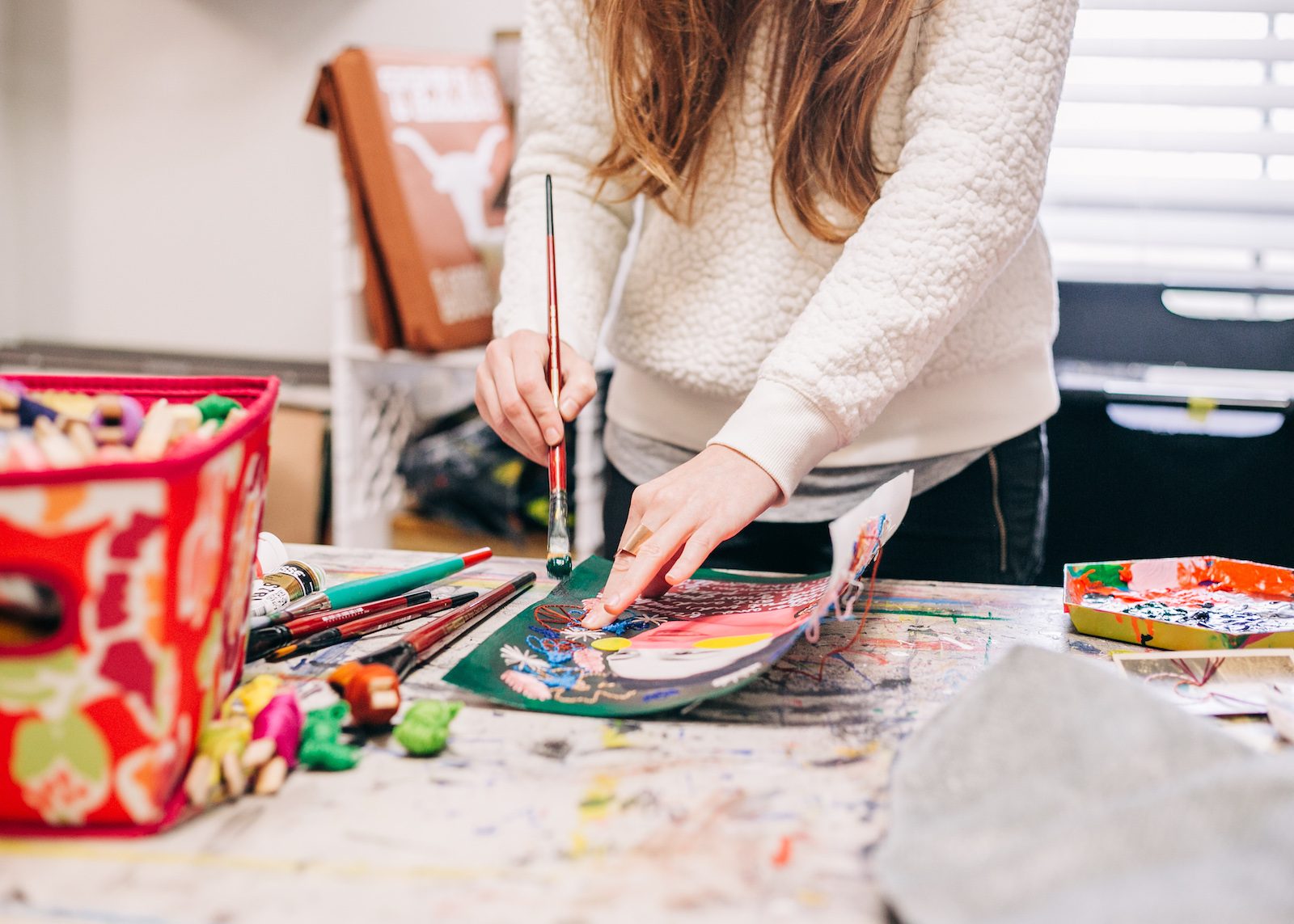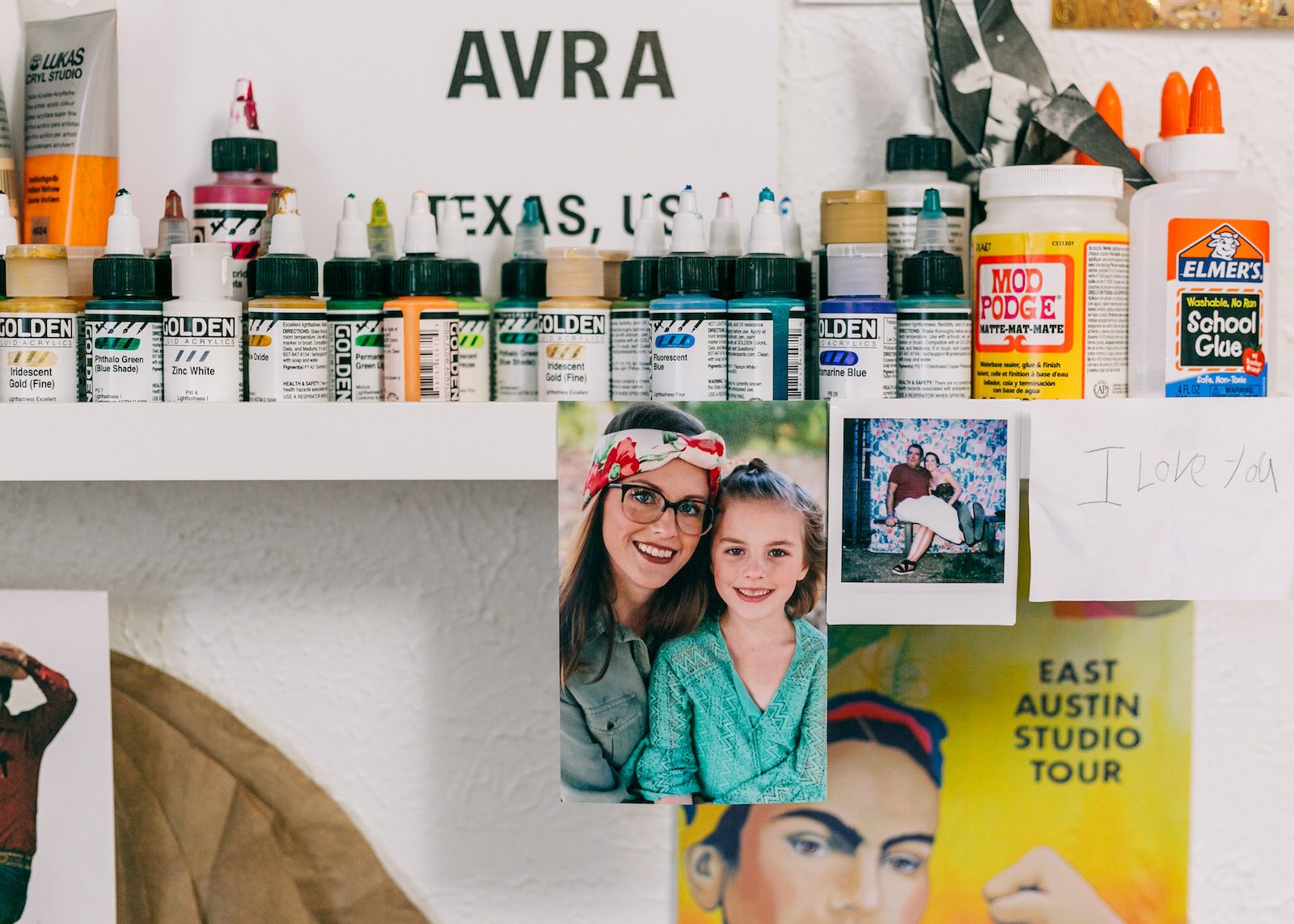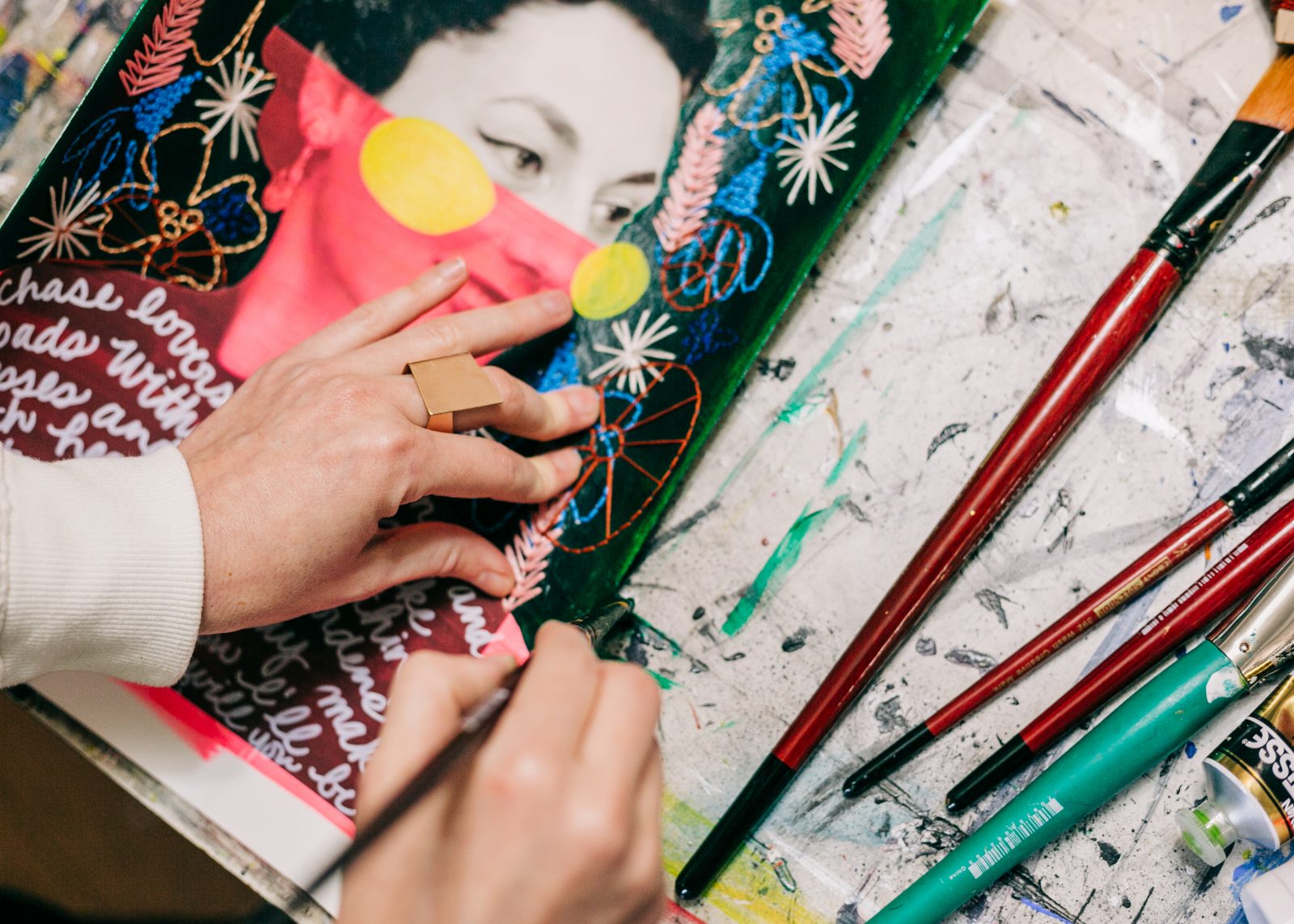In celebration of Women’s History Month, we’re partnering with Saatchi Art to showcase an artist whose work deifies everyday women across history.
Austin-based multimedia artist Whitney Avra shocks life and relevancy into old imagery. She pours through antique photographs, until confronted with the face of a woman who, though silent and distant, radiates with vibrancy. It’s then that her work begins. Here, we chat with Avra about all things identity, history and art—and find out a little bit more about how as she stitches her photographs, she’s really quilting together the women of the past and present.
Your work is obviously made possible by historical imagery—were you always interested in the past or is this something that has developed over time?
I have always had a love affair with old photographs and vintage postcards. I collected boxes and boxes of small black and white snapshots for many years before I started incorporating them into my artwork—now they are the first image that I always start with. I have always been completely curious about the people in these images. Who were they? What kind of life did they live? Were they happy? What were their names?
How do you feel your work helps women of today draw connections to women of the past?
My work centers around the idea of “boonkin”, a word I’ve made up to describe our magical kinship to each other—specifically the matriarchal bond that women share. By giving sainthood to the women in my work, women today remember and recognize that the challenges faced by women have always been the same; we have always struggled for true equality in society.

How do you choose your images? Do you feel yourself drawn to specific women or specific styles?
I feel a deep connection to the women in the images I choose to work with. When combing through images, I have a visceral and emotional reaction when I see certain women, almost as if I’ve known them in a past life. Often times, I will dream of the women in a particular piece after I start it. I joke, but not really, that the women actually choose me.
Tell me a bit about your process, how long does it usually take to create a collage start to finish and how do you know when one is “done”?
All of my pieces start with photographic imagery. Color blocking and layering in the halo comes next, followed by any assemblage of vintage findings, sequins, beads, fabrics and embroidery stitch. Collectors are surprised to learn that the stitching work is done by hand and can take up to 80 hours to complete on a large piece. The stitching becomes precarious as the paper gets weak from so many holes being poked with the needle. I’ve ripped pieces before, because I wanted to add just a little more detail. That’s the worst feeling; you’ve invested so much of your soul into completing a work. Now, I know when to stop before I’ve pushed the limits of the materials too far. This is when the piece is done—it’s somewhat out of my control.
How do you find that people react to your work? What are some of the comments or critiques that have stuck with you over the years?
It’s probably not surprising to hear that women feel a deep connection to my work. That being said, in 2018 most of the people who purchased my work were men. In 2019, I sold more original works than I ever have before, almost entirely to women. I find these facts a fascinating demonstration of how women see themselves in relation to wealth and their ability to purchase things they want.
When people view my work, they often say that they see their mother, aunt, sister, or friend. Because of the way I frame the women as saints, viewers assume they should know who they are even though I almost always intentionally choose photographs of women who are anonymous.
“In a world where every aspect is dominated by men, I will continue to build my own seat and pull it up to the table.”

Feminine identity is so broad and fluid and always under a lot of scrutiny—what does “femininity” look like to you and how do you channel that in your work?
Feminine identity is a topic that I am constantly exploring. For me personally, femininity is a mix of casual and frills. It’s about being comfortable in soft fabrics while wearing big gaudy earrings, silky skirts and sneakers, metallic boots and denim. Femininity is about stepping into your power every morning when your feet hit the floor—as a mother, sister, girlfriend, daughter, entrepreneur, boss lady. It’s about wanting other women to see and feel that they are powerful. All women share this unique force within them. I use this force to create my work.
While viewing the stitching on my work, a man once commented something to suggest that because it was “women’s work” that maybe I would find more success on an online craft goods platform. When I pick up a brush or spend endless hours hand-stitching, I agree—I am doing “women’s work” simply because I’m a woman. Being a woman doesn’t make me sub-human. In a world where every aspect is dominated by men, I will continue to build my own seat and pull it up to the table. With my work, I invite other women to do the same.
So much historical and classical art involves the “male gaze”—in your opinion, what is the power of the female gaze?
For as long as we have known the arts, we have been presented with one point of view—the “male gaze.” As a feminist, I find this infurating. When society is offered one point of view, whole belief systems and cultures are built inside of a vacuum with only one side of the coin in mind.
My work completely disregards the male gaze from the very beginning. As women, if we want to change the narrative of how we are seen, we have to control it. If I want women to be seen as saints, that’s how I’m going to present them.

And finally, with this being the 100 year anniversary of women’s suffrage in America, what do you hope has changed about society/the lives of women 100 years from now?
100 years from now, I hope women are free to be who they want to be without societal stigmas and cultural expectations. I hope that all women are able to make a living wage equal to that of their male counterparts, and are not limited by the choices they make to have children (or not) or get married (or not). I hope that our society values the power of women—that future women can be passionate without being labeled as “emotional” and that women are believed when they speak up. In 100 years, I hope women can wear a dress on a weekday without being asked “who they dressed up for” and not be labeled as a prude if they choose crew neck over cleavage. We’ve come a long way, but we have a long way to go.
Comments